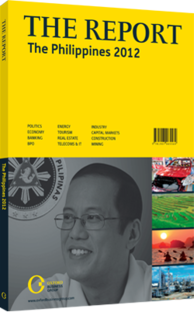Winning the peace: Finding solutions to internal and external security issues
A central pillar of the national medium-term development plan, Philippine Development Plan 2011-16, is the peace and security section, which outlines the importance to the economy and society of tackling internal and external threats, which include armed conflicts, human trafficking and terrorism.
The plan sets out strategies for finding solutions to these difficult issues via a twin-track approach combining a negotiated political settlement on the one hand, and accelerated development to tackle the underlying causes of the issues on the other. The plan constitutes a new social contract between the state and the people, with peace and security an important element of this contract. In this, the government pledges to exert all its efforts towards achieving these aims, with the peace process aimed at arriving at the negotiated political settlement of all armed conflicts.
INTERNAL CONFLICT: Parts of the country have been racked with internal conflict for decades, with the southern part of the archipelago, particularly the region of Mindanao, a hotspot of fighting between security forces and groups such as the separatist Moro Islamic Liberation Front (MILF). Elsewhere, groups such as the Communist Party of the Philippines-New People’s Army-National Democratic Front (CPP-NPA-NDF) and the Rebolusyonaryong Partido ng Manggagawa-Pilipinas/Revolutionary Proletariat Army/Alex Boncayao Brigade (RPMP/RPA/ABB) have also engaged in armed conflict. Thus, completion of the implementation of final peace agreements with the Cordillera People’s Liberation Army, an indigenous separatist group which is aligned with the CPP and NPA in Luzon, is a key element of the plan, as is completing the tripartite implementation review of the 1996 final peace agreement with the Moro National Liberation Front, from which MILF split off in the 1980s. In late 2011, talks resumed between the government and the MILF in Malaysia, with high hopes of reaching a settlement in 2012.
The root causes of conflict also have to be addressed. The plan calls for the implementation of corresponding development tracks to address the causes of armed conflicts via conflict prevention and peace-building initiatives. These conflicts inflict considerable direct and indirect damage to the fabric of Filipino society in areas of fighting as well as peace. They negatively affect the delivery of basic services to the conflict-affected areas (CAAs), and create development inequality between CAAs and the rest of the country. Widely seen as key to moving forward here is the Payapa at Masaganang Pamayanan (PAMANA), or Peaceful and Resilient Communities programme. This aims to focus development in CAAs by strengthening peace building, reconstruction and development. Under PAMANA, the government aims to ensure that improved basic services are delivered to CAAs and that citizens are served by accountable and responsive governance.
SECURITY IMPROVEMENTS: The plan also looks at external security challenges. These include terrorism, smuggling and trafficking in humans, drugs and arms. The strategy calls for greater efforts to safeguard the country’s maritime interests in particular, with a special focus on the 322-km exclusive economic zone, which has seen some ongoing disputes with China, in particular, concerning overlapping claims in the South China Sea, also known locally as the West Philippine Sea. The Philippines wishes to amplify its maritime security capabilities, while also seeking a peaceful and negotiated solution. In addition, the plan hopes to address the issue of human trafficking by implementing more robust policing of the nation’s borders, which will be improved by strictly enforcing immigration laws and upgrading the country’s maritime surveillance capacity. Furthermore, the plan aims to cultivate external security by strengthening bilateral relations with powers such as the US and Japan, and multilaterally by expanding participation in UN peace operations.
The year ahead will thus likely see the government continuing to make efforts to negotiate solutions to armed conflicts at home and head off tensions abroad via constructive dialogue and development initiatives.
You have reached the limit of premium articles you can view for free.
Choose from the options below to purchase print or digital editions of our Reports. You can also purchase a website subscription giving you unlimited access to all of our Reports online for 12 months.
If you have already purchased this Report or have a website subscription, please login to continue.

